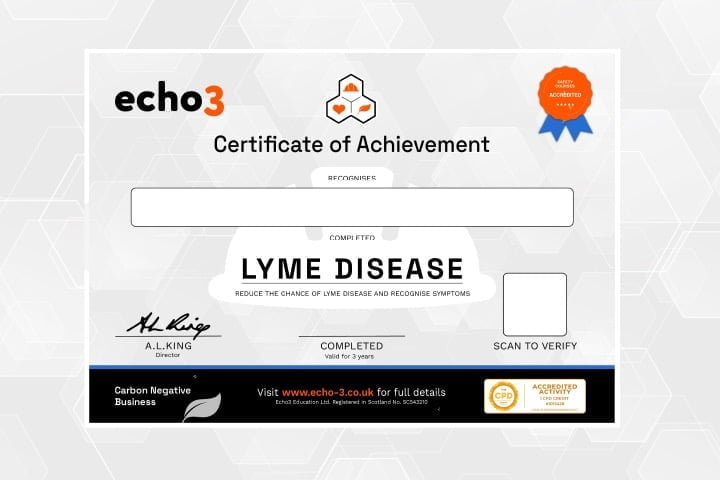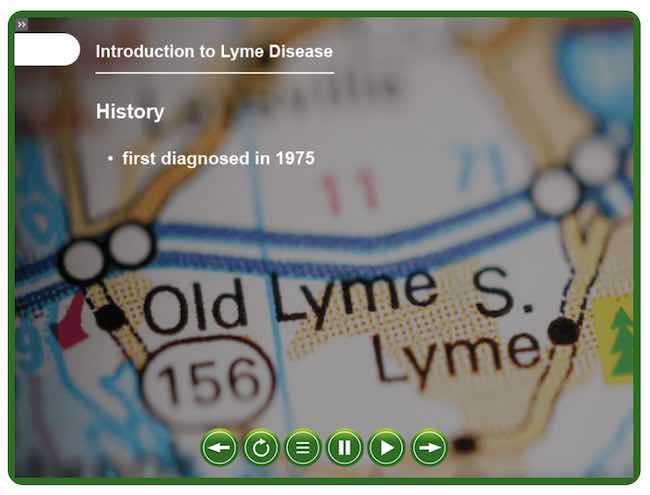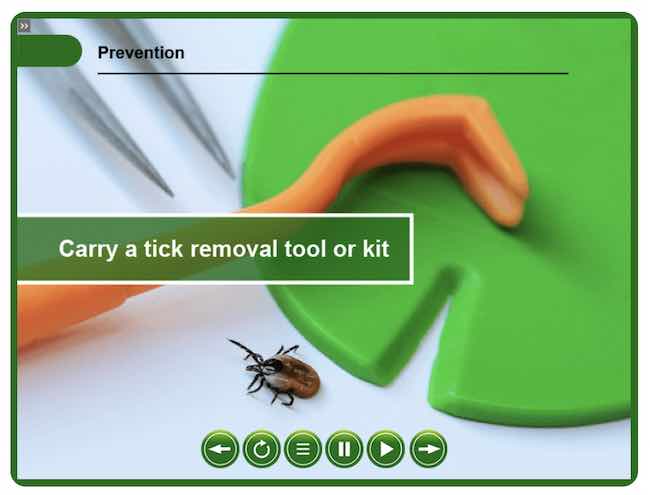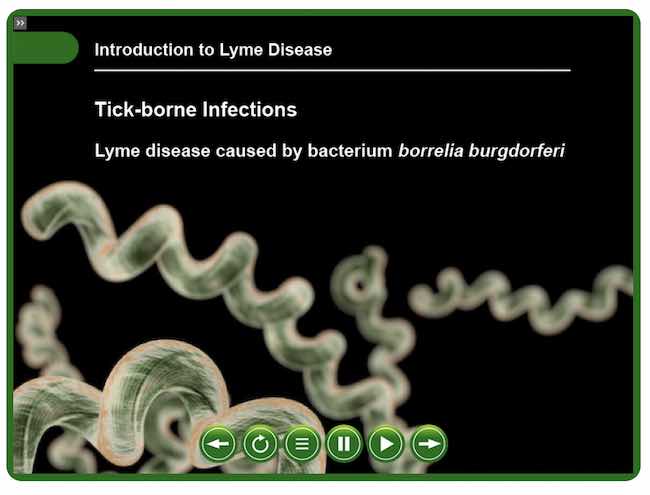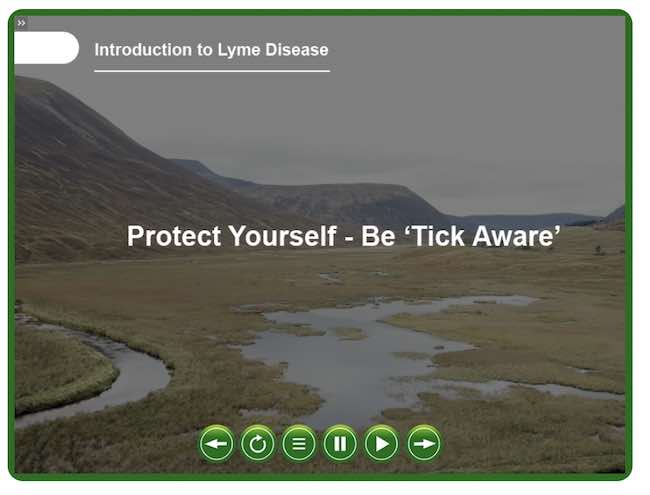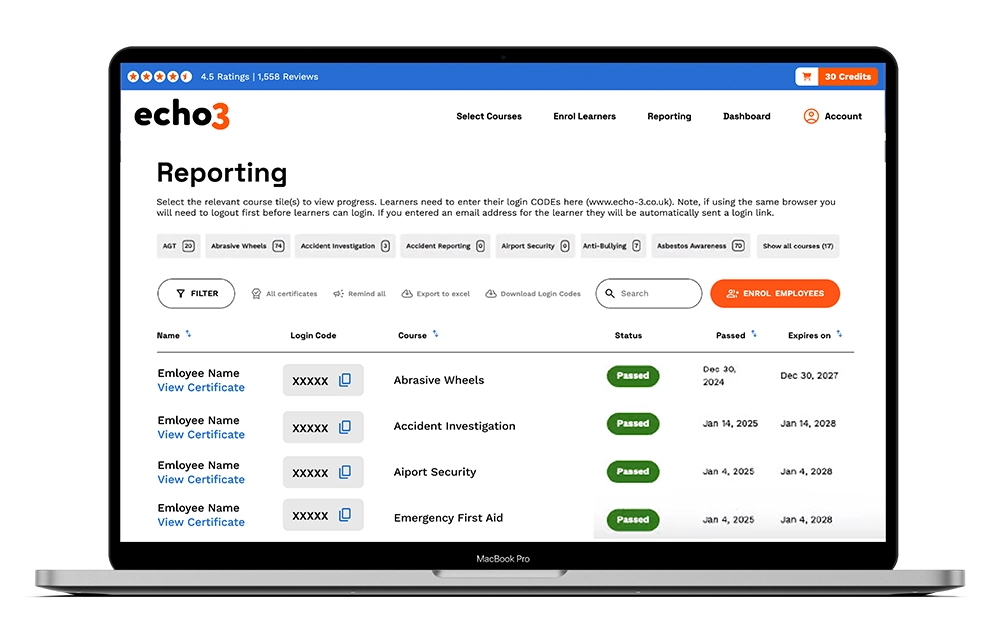Lyme Disease Awareness Course
Lyme Disease Awareness is a new e-learning course designed to provide learners with important practical information and advice on this growing risk to health.
Lyme disease is a bacterial infection which can be passed to humans by the bite of an infected tick, and case numbers are increasing. With early diagnosis and treatment, most people go on to make a full recovery.
However, if treatment is delayed or unsuccessful, Lyme disease can cause a wide range of serious and debilitating health problems. Unfortunately, most sufferers don’t remember any tick bite, and general awareness about risks, preventative measures, symptoms and treatment is low, sometimes even among the medical profession.
This online Lyme Disease course helps employers with staff who work outside meet their legal responsibilities to protect the health of affected employees.
Lyme Awareness Course Content
The online Lyme Disease Awareness training course covers key topics including:
- What is Lyme disease?
- Ticks
- Preventing tick bites
- Checking for ticks
- Removing ticks safely
- Symptoms, diagnosing and treatment
Lyme Disease Awareness can also be adapted or tailored to suit your own needs – please contact us (info@echo-3.cok) for more details.
Lyme Disease Awareness Certificate
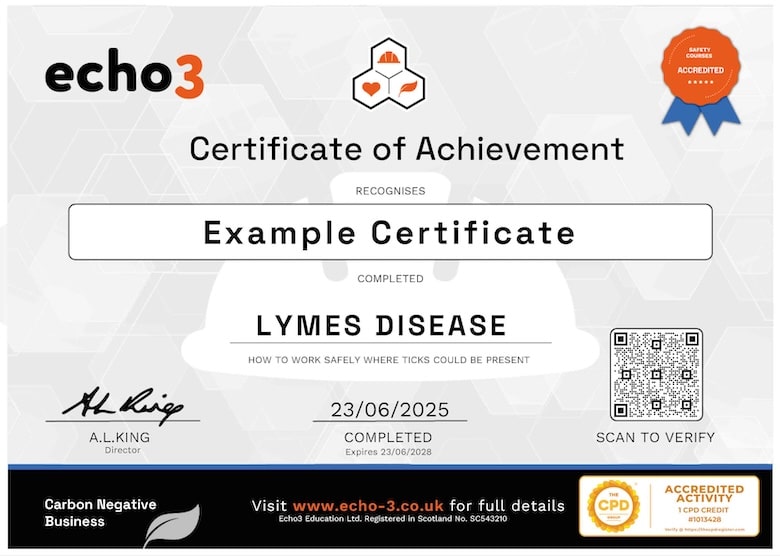
Download and Print Your Certificate
- Written in compliance with the Health and Safety at Work etc. Act 1974
- Developed by qualified health and safety professionals
- Accredited by CPD – learn more about CPD here
- Last Updated June 2024
- To gain the certificate you must complete the assessment which involves 20 questions.
- The online Lyme Disease Awareness certificate is valid for 3 years.
Reviews
How to Get Certified in 3 Steps
Individual Learners

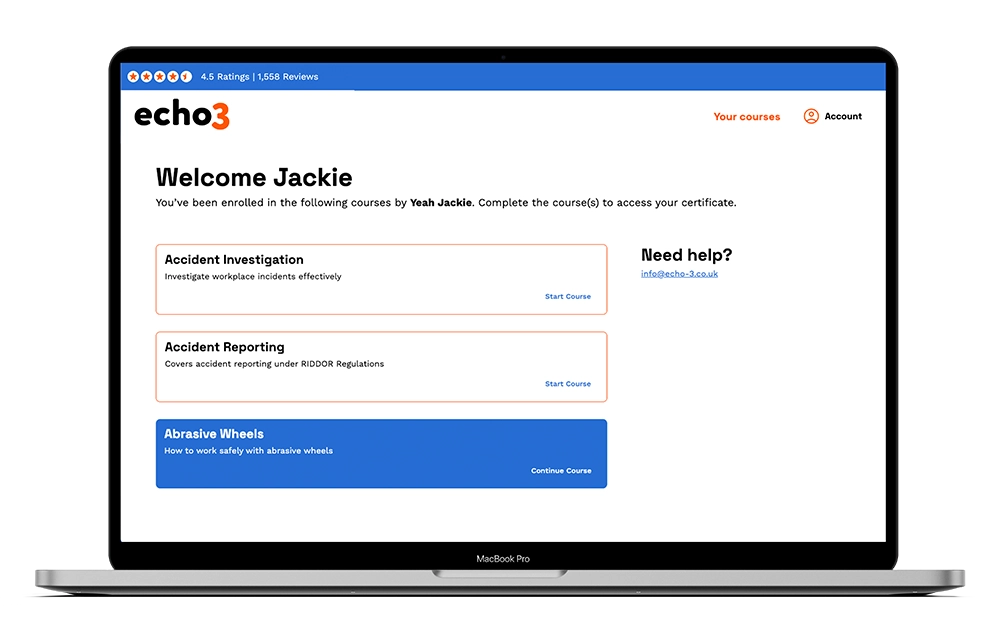
Benefits for Individuals
-
Engaging video-based content
-
Learner dashboard included
-
Instant access after payment
-
Free course retakes
-
Shareable digital certificate
 QR Code Certificate
QR Code Certificate




Bulk Buying Discounts
Who should take this course?
While anyone who works in green spaces outdoors can encounter ticks, groups at higher risk include:
- farmers
- forestry and other agricultural workers
- gardeners and landscapers
- gamekeepers
- vets
- nature conservation staff
- park or wildlife management workers
- outdoor pursuits instructors
- members of the armed forces
- ecologists; and
- academics carrying out field-based study
What are the benefits of Lyme training?
- directly addresses an established and growing risk to health and wellbeing for anyone whose work or leisure time activities could expose them to ticks
- ensures compliance with UK law (specifically the requirements to ensure the health, safety and welfare at work of staff and non-employees, to assess and minimise safety risks, and to provide safety-related information and training)
- supports workplace health, safety and wellbeing strategies
- available on multiple platforms including PC and tablet
- successful completion awarded with certificate
- flexible completion reporting
- available as embedded or hosted package
- content can be tailored to your organisation
What is Lyme disease?
Lyme disease – also known as Lyme borreliosis – is a bacterial infection which can be passed to humans by the bite of an infected tick.
What are the treatments for Lyme disease?
Early diagnosis and adequate antibiotic treatment are very important. Most people go on to make a full recovery. But if left untreated – or if treatment is unsuccessful – Lyme disease can cause serious long-term health problems.
How common is Lyme disease?
The true figure is hard to know because so many cases go undiagnosed or unreported. But what is certain is that cases are on the increase.
In the UK, it was previously thought there were between two and three thousand new cases annually, but the true figure is now thought to be in the range of eight to ten thousand, with Scotland accounting for more than a quarter of all cases. The incidence in many European countries is even higher than the UK, and the estimated incidence in the USA is around 500,000 cases per year.
You can catch Lyme disease at any time of year, although this is most common in spring and summer.
What are ticks?
Ticks are small blood-sucking parasites. They are not insects but arachnids, related to the spider family. There are around twenty different species of tick found in the UK, each with its own preference of animal host from which to feed.
The tick most likely to bite humans is the sheep tick – Ixodes ricinus – also known as the deer tick, sheep tick or castor bean tick.
Where are ticks found?
Ticks need moist air to survive, and so live in areas with moderate to high levels of rainfall, and among vegetation which can retain a high level of humidity such as tall grass or leaf litter.
Habitats include grassy or forested places such as woodland, heathland, moorland or rough pasture, but even suburban parks and domestic gardens.
What is tick-borne encephalitis?
Tick-borne encephalitis (TBE) is a viral infection that affects the central nervous system, specifically the brain and spinal cord. It is transmitted to humans through the bite of infected ticks. While many people experience mild or no symptoms, TBE can, in some cases, lead to severe neurological complications, including inflammation of the brain and spinal cord.
People should protect against tick bites in the usual ways, as there is no antiviral treatment against Tick-borne encephalitis (TBE).
Who assisted with this course?
This course was developed in partnership with subject matter experts from Lyme Resource Centre (LRC), one of the UK’s leading Lyme disease charities, for whose input and assistance we are sincerely grateful. LRC receive a percentage of sales revenue from the course.
Thank you also to the other organisations who helped, including Lyme Disease Action, LDUK (Lyme Disease UK) and the University of Bristol.






